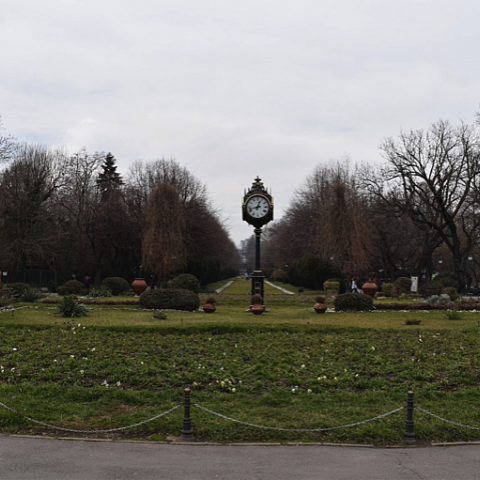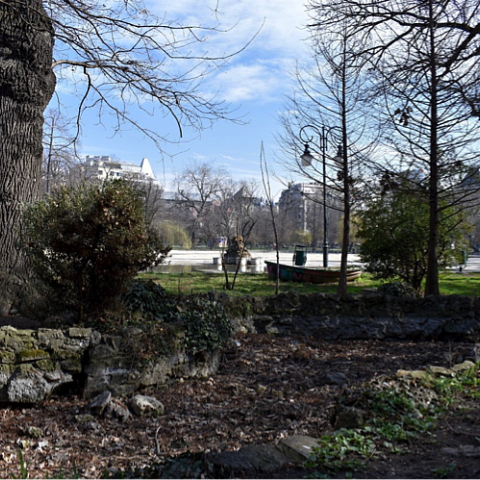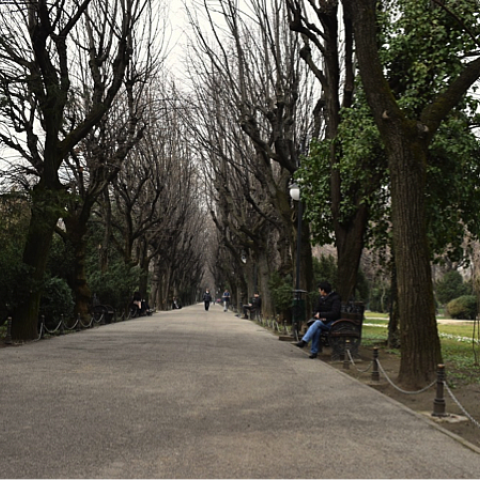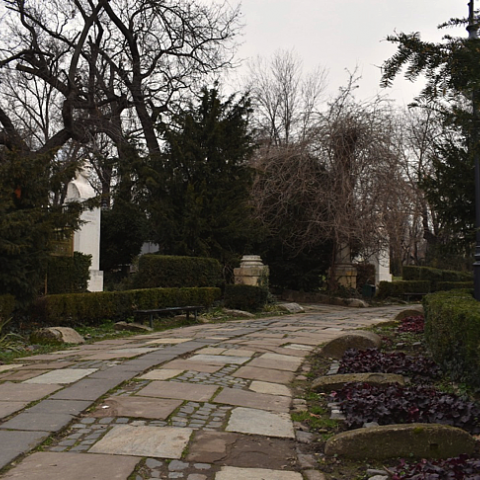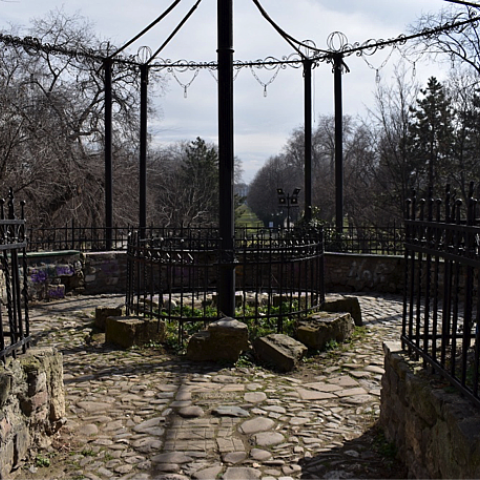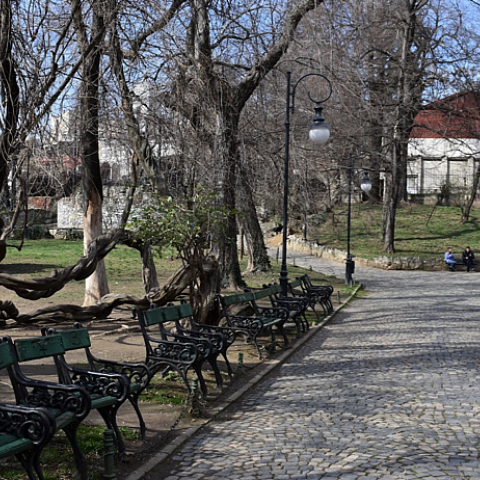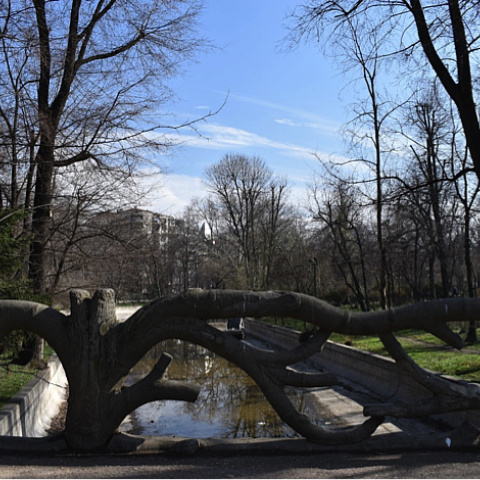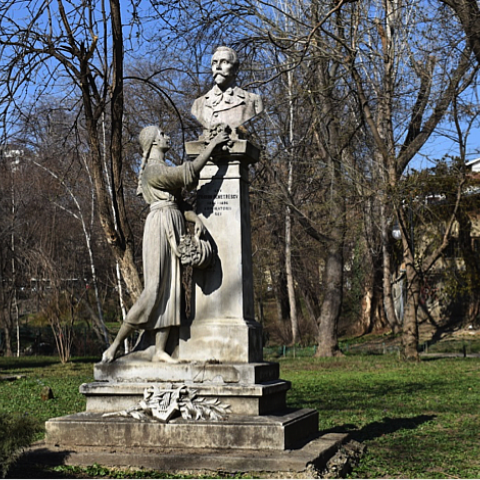“Destination: Bucharest” – A walk in Cișmigiu Gardens, the city’s oldest park
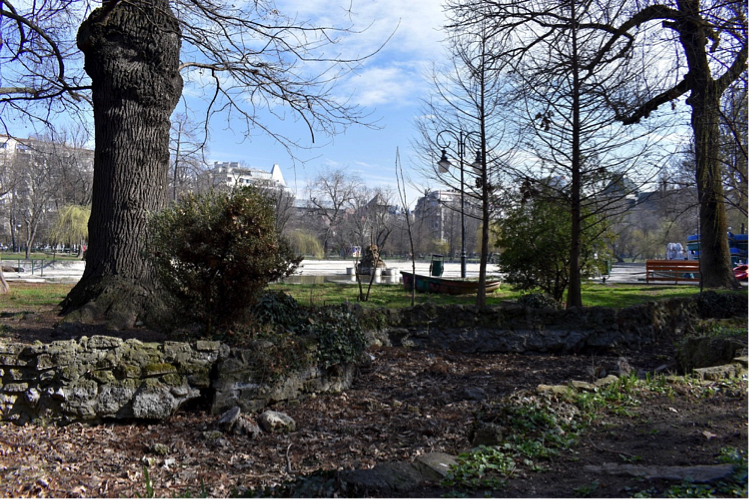
The parks are the "green lungs of cities,” spaces where you can get your energy levels back up on the weekends or relax at the end of a busy day. There are many such green locations in Bucharest, of different sizes, all attracting many visitors regardless of the season. And the Cișmigiu Park is probably the most elegant park in the Capital.
Bordered by two busy arteries, the Cișmigiu Gardens are right in the middle of the Capital, defying, in a way, the big city bustle. Inaugurated 166 years ago, it is the oldest public garden in Bucharest, maintaining the elegance of the old days.
We enter the Cișmigiu Gardens shortly after noon, still enjoying the cool, moist air of a spring morning. It’s March and the joy of a new season is in the air. We are surprised to see that the first steps we take in the small central park are on the Spring Alley. We smile as we try to get past the pigeons gathered on the alley. Most of them got used to the visitors and don’t fly away as we approach them.
There are two access points to Cișmigiu Gardens from Regina Elisabeta Boulevard: a smaller entrance on the corner and the main entrance, with a wide opening towards the round lawn where an elegant clock with golden elements is also installed. We use the smaller entrance today, but after only a few steps we reach the main entrance as well.
Sitting on one of the benches installed all around the entrance lawn, a group of youngsters is laughing loudly. Close by, two grandparents are talking quietly while, next to them, a young man seems absorbed by his mobile phone. Despite the gray clouds, the park is lively today too.
The story of Cișmigiu Garden begins more than 240 years ago, in 1779, when Alexandru Ipsilanti, ruler of Wallachia, ordered the construction of two fountains in the swampy area that is today the park. In 1830, dissatisfied with the appearance of the pond that formed here, General Pavel Kiseleff ordered its drying and the transformation of the place into a public garden. However, this became reality only during the reign of Gheorghe Bibescu, the garden being arranged by Viennese landscape architect Carl Friedrich Wilhelm Meyer.
The garden was officially inaugurated in 1854, after several landscaping and beautification works. At that time, this place was hosting boat contests on the lake and cultural representations.
We start our walk on one of the garden’s main alleys, which was turned into a tunnel by the rich crowns of the tall trees. The branches are still leafless, but we can imagine the alleys covered by a refreshing shade on the hot summer days. We then take a narrower alley and we immediately notice, on the left, a small commemorative monument, made of marble, dedicated to the Sturdza family - one of the oldest and most prestigious aristocratic families in Romania.
Further on, walking on the winding alleys lined with plants of different sizes and trees with strange shapes, we notice on the left a ping-pong table and two benches painted in green, which are probably used by the players’ supporters. From place to place we also spot informative signs made up of arrows pointing to the main attractions of this place.
We’re soon arriving to the area called “La Șahiști” (Chess players’ area), the special corner of the park where dozens of older gentlemen meet every day for a game of chess, backgammon or rummy. There is much joy in the air, but also tension. They all look like they want to win at least one game today.
A cobbled alley takes us to another attraction of the park: Aleea Rondului Roman (the Roman Round Alley). Created by landscape architect F. Rebhun, the Roman Round is bordered by stone busts of some of Romania’s great cultural personalities, such as Mihai Eminescu, Alexandru Odobescu, B.P. Hașdeu, Nicolae Bălcescu, Ion Creangă, I.L. Caragiale or George Coșbuc.
Back on one of the main alleys, we pass the area called “parterul central” (the central ground floor) - a carpet of grass and flowers that crosses the park from one end to the other, interrupted from place to place by alleys. Today, only a few small white flowers adorn this area, but things will change when the temperatures will rise and many other flowers will reveal their colorful and fragrant petals.
We pass by the Monument of American Heroes and follow the cobbled alley to the area called "La Cetate" (the Citadel’s Area). Here are the ruins of a monastery built in 1756 by logothete Văcărescu; it is said that this was the starting point of a secret tunnel linking the Crețulescu Palace to the shore of Dâmboviţa. Before going further, we also climb to the highest point of the ruins for a few pictures. The clouds have moved away and the sun is now warming us discreetly.
We continue our walk and pass by a memorial plaque dedicated to the Romanian military heroes, and after a few more steps we observe the Mihai Eminescu Spring. Further on, we leave a children's playground behind and stroll along the alleys lined with benches painted in dark green, wild chestnuts and smaller trees. We pass by mothers and their children, youngsters walking their dogs and other park visitors who enjoy the springtime weather. In front, right next to the secular plane tree, a father and his little boy are playing with a ball.
Unfortunately, the lake is not accessible today, as it has been dried up for spring cleaning. But, as soon as the weather warms up and the lake is filled with water, the lovers, families and other visitors will be able to enjoy boat rides on the lake again and see ducks and swans. And, when winter returns, part of the lake will be turned into an ice rink once again, as it happens every year. For now, we just sit on the lakeshore for a few minutes, on the green grass, surrounded by hundreds of snowdrops.
Other attractions of the park are the rose garden, the Sissi Stefanidi Spring, "Movila" (the mound), the orchestra pavilion, the oldest newspaper kiosk in Bucharest (which can be seen not far from the entrance from Regina Elisabeta Boulevard), the marble monument erected in the honor of French soldiers who died fighting in World War I, as well as numerous statues and busts.
Although it covers a relatively small area of approximately 16 hectares, the Cișmigiu Gardens are one of the most popular and loved parks in Bucharest. Regardless of the season, this central garden welcomes visitors with a charming atmosphere, whether they are families or noisy groups of youngsters, older neighbors who meet here, lovers or photographers looking for inspiration, or tourists eager to discover the beauties of Bucharest.
Useful information:
The Cișmigiu Gardens are located close to Universității Square and the Old Town.
Other tourist attractions nearby are the Crețulescu Palace, Izvor Park and the Parliament Palace, Calea Victoriei, the National Military Circle and Drapelului Square.
The closest subway stations are Izvor and Piața Universității. Using public transport, you can also get here by bus (lines 122, 137, 138, 268, 336, 601 and 784) or by trolleybus (lines 61, 66, 69, 70, 85, 90 and 91).
This material is part of a project under the program of promoting the touristic heritage "Destination: Bucharest", carried out by the Bucharest City Hall through the Public Monuments and Touristic Heritage Administration (AMPT).
Photos by Romania-Insider.com for AMPT








